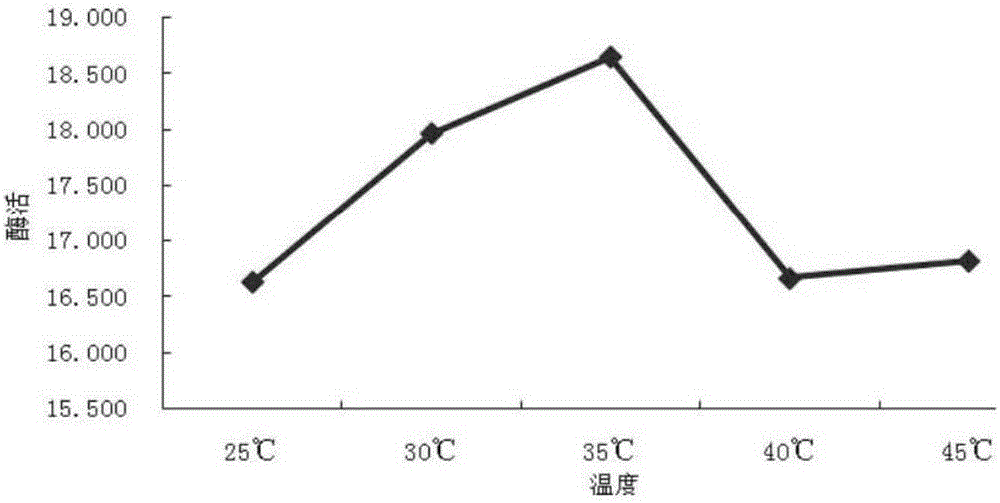Method for degrading aflatoxins in peanut meal by utilizing solid fermentation of fructificatio amaurodermatis rudae
A kind of aflatoxin, solid fermentation technology, applied in the direction of application, pharmaceutical formula, food ingredient function, etc., can solve the problems of difficult growth and reproduction of strains, strains that cannot be applied, and less research on degradation, etc., to achieve growth inhibition and toxin production, Ease of industrial operation and simple operation method
- Summary
- Abstract
- Description
- Claims
- Application Information
AI Technical Summary
Problems solved by technology
Method used
Image
Examples
Embodiment 1
[0043] Example 1 - Heizhi solid fermented peanut meal can efficiently degrade aflatoxin in peanut meal
[0044] 1. Screening of edible fungus strains that degrade aflatoxin
[0045] 1. Preliminary screening of strains producing and degrading aflatoxins
[0046]The selected strains produced different types of laccases when they were cultured on the two selection media of GLDS and NLDS. Laccase reacts differently on different selection media. When it reacts with guaiacol, it will produce a reddish-brown discoloration circle, and when it reacts with α-naphthol, it will produce a blue-black discoloration circle (such as figure 1 ), the diameter and color of the chameleon circle became bigger and darker with the increase of culture time. The color of the chromatic circle of the strain on the guaiacol medium was darker than that of the α-naphthol medium, but the diameter of the chromatic circle it produced was not as large as that on the α-naphthol medium, presumably because The...
Embodiment 2
[0066] Example 2 - After the black sesame is activated on the peanut shell medium, the activity is improved.
[0067] 10g of peanut meal was added to 10ml of water, inoculated with 1g of black sesame strain activated by peanut shells, and cultured at 30°C for 14 days; at the same time as a control, 10g of peanut meal was added to 10ml of water, and 1g of activated corn stalk was inoculated with black sesame strain. Cultivate at 30°C for 14 days; then add 20ml of distilled water, enzymatically hydrolyze at 30°C for 4 hours, measure the content of aflatoxin in the enzymolysis solution, the degradation rate of aflatoxin of the black lucidum strain activated by inoculation with peanut shells is 76.2%, while inoculation The degradation rate of aflatoxin of the black sesame strain activated by corn stalk is 62.2%, and the degradation rate of aflatoxin is increased by 22.5%.
Embodiment 3
[0068] Example 3 - Black Mushroom grows luxuriantly in peanut meal, which can inhibit the growth and toxin production of Aspergillus flavus
[0069] Add 10ml of water to 10g of peanut meal, inoculate the Heizhi strain plugged with 3 strains, and culture at 30°C for 14 days, and the growth of Heizhi in peanut meal is vigorous (see Figure 7 ); at the same time as a control, 10g of peanut meal was added with 10ml of water, without inoculation with black sesame, and cultivated at 30°C for 14 days. It is 325.9ppb.
PUM
 Login to View More
Login to View More Abstract
Description
Claims
Application Information
 Login to View More
Login to View More - R&D
- Intellectual Property
- Life Sciences
- Materials
- Tech Scout
- Unparalleled Data Quality
- Higher Quality Content
- 60% Fewer Hallucinations
Browse by: Latest US Patents, China's latest patents, Technical Efficacy Thesaurus, Application Domain, Technology Topic, Popular Technical Reports.
© 2025 PatSnap. All rights reserved.Legal|Privacy policy|Modern Slavery Act Transparency Statement|Sitemap|About US| Contact US: help@patsnap.com



